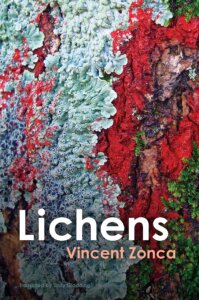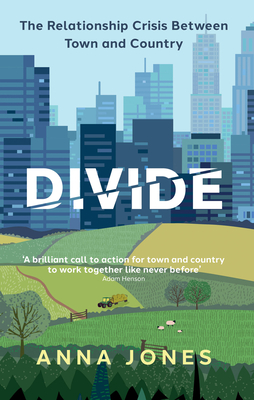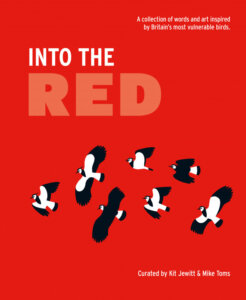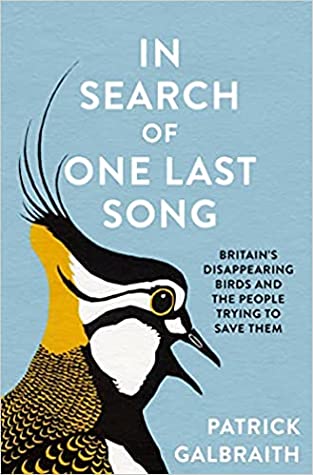It seems that I have reviewed 55 books on this blog this year – and a cracking bunch they were. Here they are in alphabetical order by author:
When There Were Birds by Roy and Lesley Adkins – review
Peak District by Penny Anderson – review
Wild Green Wonders by Patrick Barkham – review
The History of the World in 100 Plants by Simon Barnes – review
Where the Wild Flowers Grow by Leif Bersweden – review
Land of Milk and Honey by Jamie Blackett – review
Wildlife of Maldon by John Buchanan – review
Low-carbon Birding by Javier Caletrio – review
The Hen Harrier’s Year by Ian Carter and Dan Powell – review
Rhythms of Nature by Ian Carter – review
Field Guide to Whales, Dolphins and Porpoises by Mark Carwardine – review
Saving Eden by Kevin Corcoran – review
What Climate Justice Means by Elizabeth Cripps – review
Seasons of Storm and Wonder by Jim Crumley – review
Thin Places by Kerri ni Dochartaigh – review
At the Very End of the Road by Phillip Edwards – review
Land Healer by Jake Fiennes – review
In Search of One Last Song by Patrick Galbraith – review
The Wryneck by Gerard Gorman – review
Birds, Beasts and Bedlam by Derek Gow – review
The Trespasser’s Companion by Nick Hayes – review
Audubon at Sea by Christoph Irmscher and Richard J. King (eds) – review
From Little Acorns… by John D. James – review
Into the Red curated by Kit Jewitt and Mike Toms – review
Divide by Anna Jones – review
Ants by Richard Jones – review
Swan by Dan Keel – review
An Eye for Birds by Bruce Kendrick – review
Children of the Anthropocene by Bella Lack – review
Rooted by Sarah Langford – review
Cornerstones by Benedict Macdonald – review
After They’re Gone by Peter Marren – review
Beauty of the Beast by Alan Marshall – review
Fergus the Silent by Michael McCarthy – review
A Haven for Farmland Birds by John Meed – review
Island to Island by Sally Mills – review
The Secret Life of the Adder by Nicholas Milton – review
The Role of Birds in World War Two by Nicholas Milton – review
The Role of Birds in World War One by Nicholas Milton – review
Elegy for a River by Tom Moorhouse – review
The Bird Name Book by Susan Myers – review
Tickets for the Ark by Rebecca Nesbit – review
The Birdwatcher’s Wife by Gayle Smith Padgett – review
Meadow by Iain Parkinson and Jim Holden – review
Seasonality by Ian Parsons – review
The Horizontal Oak by Polly Pullar – review
The Birds are our Friends by Yessengali Raushanov – review
The Corncrake by Frank Rennie – review
Wild Fell by Lee Schofield – review
Treated Like Animals by Alick Simmons – review (but not published until 2023)
The Lost Rainforests of Britain by Guy Shrubsole – review
Trees by Peter A. Thomas – review
Through a Vet’s Eyes by Sean Wensley – review
Wild City by Florence Wilkinson – review
Lichens by Vincent Zonca – review
* * * * *
Shortlist for my Book of the Year 2022
I have picked my book of the year, but I’ll reveal that right at the end of this post.
Is it even sensible to pick books of the year? If you have been waiting for a book about the Wryneck or Corncrake, or one about John James Audubon’s travels by sea, then the books that deal with those topics may be, far and away, your books of 2022.
But at this time of year I look back on the books I’ve read and try to judge them by their impacts on me – was I interested, challenged, informed? Very clearly, that makes these choices personal ones because what I find interesting you may not, and what I find challenging may seem commonplace to you.
Alick Simmons’s book, Treated Like Animals, is a strong contender for Book of the Year but since it isn’t published until February it will take its chances next year (but do order it now!). Here, though, are my top 11 books of the year (still in alphabetical order by author) so my Book of 2022 is one of these;
- The History of the World in 100 Plants by Simon Barnes – review (beautifully written and illustrated)
- Low-carbon Birding by Javier Caletrio – review (it’s difficult to produce a book that is telling people things they’d rather not hear, but are important – this one does it well)
- At the Very End of the Road by Phillip Edwards – review (a book full of nature, well-observed, and uncluttered by opinions)
- Land Healer by Jake Fiennes – review (land management from a practitioner with a foot firmly in the conservation camp)
- In Search of One Last Song by Patrick Galbraith – review (10 species set into their landscapes, history and what’s going on in their countryside)
- Into the Red curated by Kit Jewitt and Mike Toms – review (quite similar to its predecessor – but just as good)
- Divide by Anna Jones – review (another of these books about the countryside (and town) and written from a farming background, but very thoughtful and fair)
- Cornerstones by Benedict Macdonald – review (I think this is this author’s best book, so far, and that makes it excellent (if I’m right))
- Fergus the Silent by Michael McCarthy – review (a rare thing – a novel that deals with wildlife and its conservation – and in a gripping and genuine way)
- The Role of Birds in World War One by Nicholas Milton – review (one of three good books by this author this year – and this is the best)
- Wild Fell by Lee Schofield – review (rewilding by the RSPB in the Lake District – ups and downs and told very well).
* * * * *
Covers?
I’ve rated all of the reviewed books’ covers as well. Although you can’t judge a book wholly by its cover (or its title) you can expect to see something that tells you about the book that lies between the covers. I’m looking for a cover that is attractive (or if not, then striking) and which informs (it would be odd for a cover to be full of birds if the pages are not) and which in some way captures the tone and mood of the writing. That isn’t easy to do – and it must be easier for some books than others.
Someone wrote to me recently saying that I only rate books’ covers from 5-10 so why bother with 0-4. It’s a fair point (except there is a 4 in this list) but there might be some ghastly covers coming along later – who knows? And a 5 does indicate that it was close to a 6 and miles better (IMHO) than a 2.
But it’s true that almost 50 of these covers scored 6-9, and the split between those scores was fairly even. So here are just three of the 9s, that I liked a lot and a few words on why I liked them.
Lichens: this was not a book to which I warmed (though you might) but the cover is wonderful and you can’t be surprised that the book is about lichens having seen the cover! The cover alone would make me pick up this book in a book shop.

Divide: the cover emphasises that this is a book about the town and country – that’s what you see. And the title rams home the message but the slash through the title is another way of demonstrating the divide. Considering the text is about how people think and behave, this is a good way to flag up the issues that you might encounter.

Into the Red: stylish, clean and modern. It’s about UK Red List birds – the cover is a big hint! when the BTO produces a book (and with Kit Jewitt) it is top rank in terms of gorgeousness. This is a very appropriate cover for a book which has many contributors – it focuses on the general subject rather than any particular tone or species or issue.

* * * * *
Previous Books of the Year on this blog
This year’s chosen Book of the Year joins these past selections;
2021 The Implausible Rewilding of the Pyrenees by Steve Cracknell – review
2020 Red Sixty Seven curated by Kit Jewitt – review,
and
Cottongrass Summer by Roy Dennis – review
2019 Green and Prosperous Land by Dieter Helm – review
2018 Wilding by Isabella Tree – review
2017 Sky Dancer by Gill Lewis – review
2016 Fingers in the Sparkle Jar by Chris Packham – review
2015 The Shepherd’s Life by James Rebanks – review
* * * * *
And so, which is my Book of the Year for 2022?
It’s got a great cover, but it has fabulous content, and it has stayed strongly in my memory since I read it first, in late April.

This book, by the young editor of Shooting Times, takes 10 species of bird and explores what has happened to them, and what is happening to them, but very much in the context of changes in the countryside and its management. It is an opinionated book, but the opinions are diverse, and are those of the people to whom the author spoke (and listened) and not his own. It’s a cultured and intelligent book.
Now I have read other people’s reviews of this book (I put quite a lot of effort into avoiding reviews of books which I review until after I have reviewed them) and it has gained high praise from many people. There are some slightly odd things said about it though, along the lines that it will bring people together – that is a tricky task for any book. What I think some of these people are saying is that they read the book selectively and think that others should agree with the bits that they agreed with. To my mind, the test of the reader is how many of the things with which you don’t initially agree you engage with. This book should appeal to the open-minded middle, which isn’t the same as undecided or not bothered.
Don’t let me mislead you – it is a great read, not a lecture. If you are interested in the conservation of wildlife in the UK (not just birds) then I think you will get a lot of stimulation from this book. Anyway, I did, and that’s why, without a doubt in my mind, it’s my Book of the Year.
[registration_form]